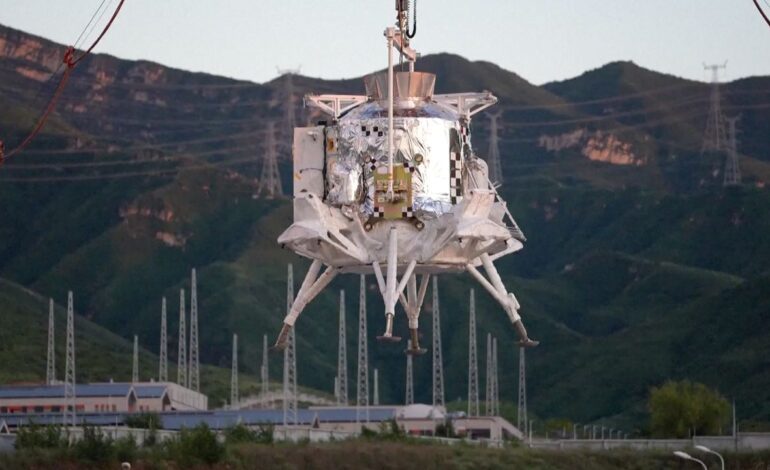China Accelerates Lunar Mission with Successful Rocket Tests

China is making significant strides toward its goal of landing astronauts on the moon by 2030. On August 15, 2025, the country successfully conducted a ground test of the first-stage propulsion system for the Long March 10 (CZ-10) rocket. This new launch vehicle is pivotal for sending astronauts to the lunar surface.
The Long March-10 rocket is set to play a vital role in China’s space exploration efforts. The variant known as the Long March-10A will facilitate missions involving the Mengzhou piloted spacecraft and the uncrewed Tianzhou freighter, enhancing operations at the Tiangong space station in low Earth orbit.
Record-Setting Propulsion Test
During the August test, engineers utilized a shortened version of the CZ-10’s first stage, equipped with seven YF-100K engines that operate on liquid oxygen and kerosene. The engines were fired for approximately 35 seconds at the Wenchang Satellite Launch Center in Hainan Province, achieving a thrust level close to 1,000 tons, setting a record for China’s space program.
Xu Hongping, an engineer with the China Aerospace Science and Technology Corporation (CASC), explained to state media that the design of the Long March-10 rocket’s first stage involves three identical core modules bundled together, known as the universal core stage. Another engineer, Peng Yue, emphasized the importance of the test, stating, “Conducting a power system test is one of the most critical steps in rocket development.”
Advancements in Moon Mission Preparations
The static fire test is part of a series of achievements China has made this year to prepare for lunar missions. Notably, on June 17, the country completed a successful pad-abort test of the Mengzhou crewed spacecraft. This test involved igniting the escape engine, propelling the capsule-tower assembly upward, and ensuring the capsule’s safe separation at a designated altitude.
This successful test marked the first zero-altitude escape scenario for a manned spacecraft in 27 years, following a similar test conducted for the Shenzhou spacecraft in 1998.
On August 6, China conducted a simulated takeoff and landing for its two-person lunar lander, named Lanyue, at a specialized testing site in Zhangjiakou, Hebei Province. This site previously hosted tests for the Tianwen-1 Mars lander, which carried the Zhurong rover to Mars. The Lanyue lander is engineered to transport astronauts from lunar orbit to the surface and can also carry a lunar rover and scientific payloads.
The August 6 test evaluated the lander’s systems for lunar touchdown and takeoff, as well as its interface compatibility for guidance, navigation, control, and propulsion. According to the China Manned Space Agency (CMSA), Lanyue is designed to serve various essential functions for astronauts, including acting as a “lunar life center, energy center and data center” during their time on the moon.
China has also developed a lunar spacesuit, unveiled in September of last year. The suit is designed to protect astronauts from the harsh lunar environment, featuring a multifunctional control panel, cameras, flexible gloves, and a lightweight construction suitable for mobility on the lunar surface.
With these advancements, China is not only enhancing its capabilities for a crewed lunar landing but also demonstrating its commitment to becoming a major player in space exploration. As the nation continues its preparations, the world watches closely, anticipating the next steps in this ambitious journey to the moon.






